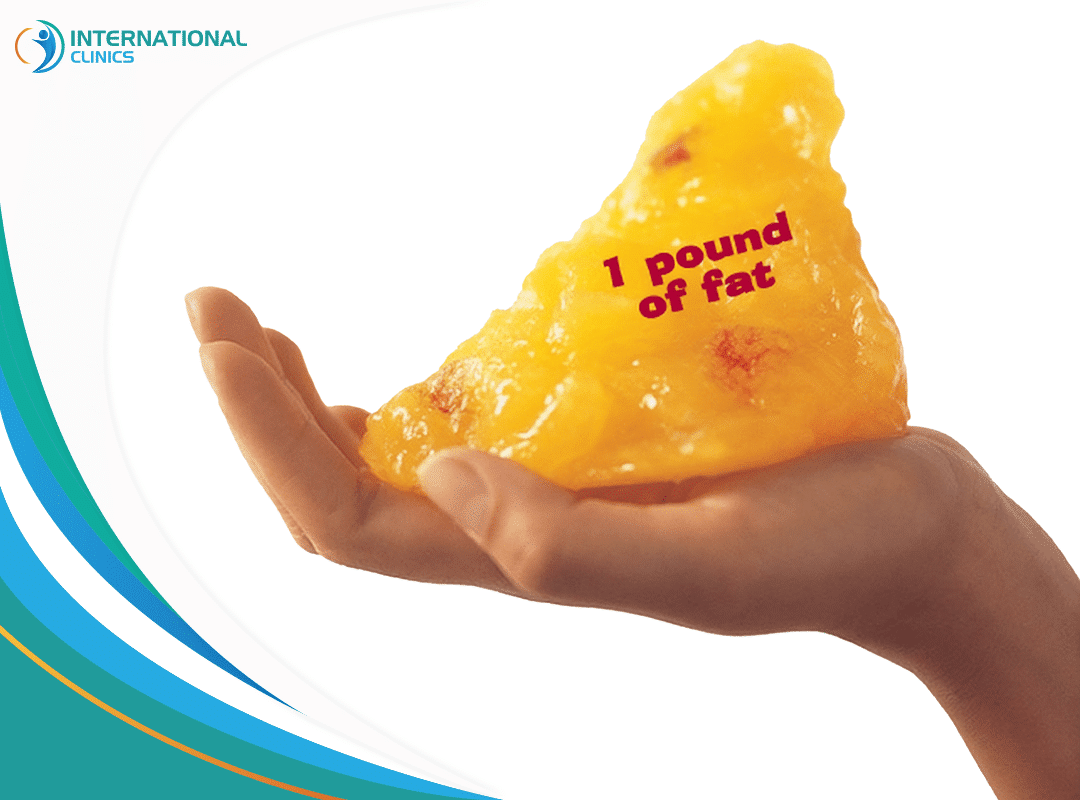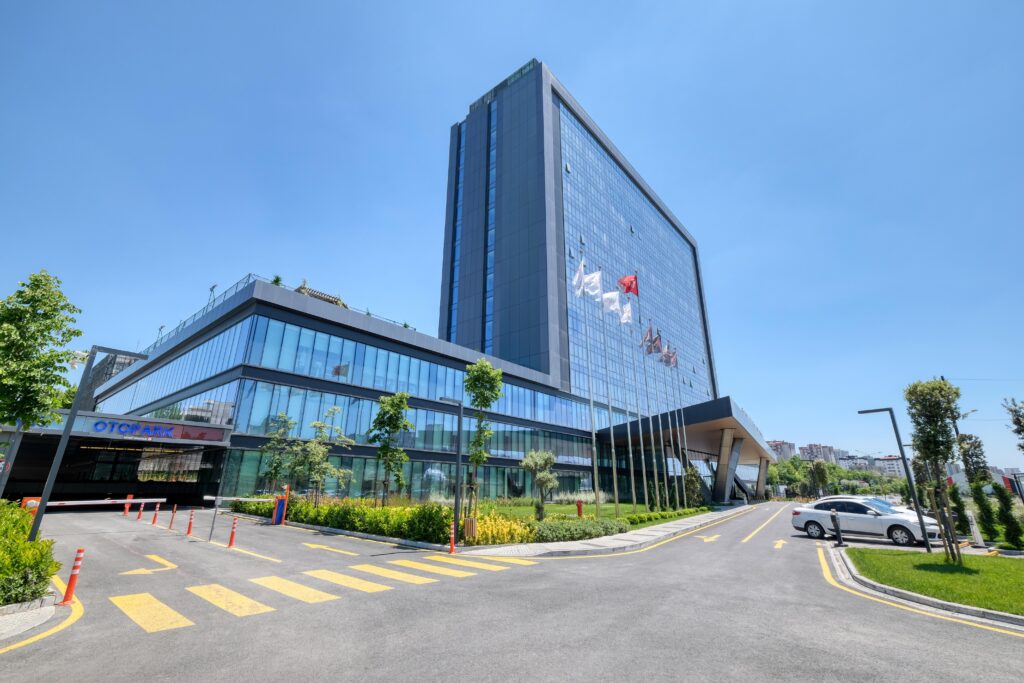




Many people struggle with pockets of excess fat that seem impossible to get rid of. Liposuction is a surgical procedure designed to remove unwanted fat deposits from specific areas of the body.
It's one of the most popular cosmetic procedures worldwide and the ability to contour and reshape the body, has helped countless individuals achieve their desired figure.
The concept behind liposuction is simple yet powerful removing excess fat from problem areas allows your natural contours to shine through.
Liposuction in Turkey can provide an effective solution to help you regain your confidence. So if you've been wondering how much fat can be removed with liposuction, keep reading as we delve deeper into this transformative procedure.
One of the important factors considerations is the patient's overall health. Generally, individuals who are in good health tend to have better outcomes from liposuction procedures. This is because their bodies are better equipped to handle the surgery and recover more quickly.
Another important factor is the patient's body composition. Liposuction is not a solution for weight loss or obesity but is effective for individuals who have localized areas of excess fat that are resistant to diet and exercise. Therefore, patients with a higher percentage of body fat may not be suitable candidates for large-scale fat removal.
Skin elasticity also plays a crucial role in determining the success of liposuction. When excess fat is removed, the skin needs to retract smoothly over the newly contoured area. If a patient has poor skin elasticity, there may be an increased risk of sagging or uneven skin texture after liposuction.
The skill and experience of the surgeon performing the liposuction procedure greatly influence the amount of fat removed. An experienced surgeon understands how much fat can be safely eliminated without compromising the patient's well-being or causing irregularities in contour.
Different surgeons may employ various techniques during liposuction procedures. Some techniques involve using ultrasound or laser energy to break down fat cells before removal, while others rely on manual suction alone. The chosen technique can affect both the amount of fat that can be removed and the final outcome in terms of contouring.
Not all areas of the body are created equal. Some areas, such as the abdomen, hips, thighs, and love handles, tend to accumulate more stubborn fat than others. These areas often respond well to liposuction and can yield noticeable improvements in body shape.
On the other hand, there are areas where fat removal may be limited due to safety concerns or potential complications. For example, removing excessive fat from the face or neck area can lead to an unnatural appearance or damage delicate structures. The amount of fat that can be safely removed from these areas is relatively small compared to larger body regions.
When considering liposuction, it is crucial for patients to have realistic expectations about what can be achieved through the procedure. Patients should communicate openly with their surgeons about their goals and desires.
A reputable surgeon will provide honest feedback on what can realistically be accomplished based on factors such as health status, body composition, skin elasticity, and specific body areas targeted for treatment.

Liposuction can effectively remove significant amounts of fat from various areas of the body. However, there are limits to how much fat can be safely extracted during a single liposuction session.
Surgeons recommend removing no more than 5 liters (11 pounds) of fat in one procedure. This maximum amount ensures patient safety and minimizes the risk of complications.
Multiple sessions may be necessary for individuals who require extensive fat reduction. By spreading out the procedure over several appointments, surgeons can ensure that each session remains within safe limits while still achieving the desired results.
To guarantee patient safety, medical professionals adhere to strict guidelines when performing liposuction procedures.
Because removing excessive amounts of fat at once increases the risk of complications such as bleeding and fluid imbalance. Also extracting too much fat in a single sitting can put undue stress on the body and compromise its ability to heal properly.
By dividing the fat removal process into multiple sessions, surgeons can minimize the risks associated with removing large amounts of fat at once.
Furthermore, spreading out liposuction sessions also enables surgeons to achieve more precise results. By focusing on specific areas during each session, they can sculpt and contour the body in a way that enhances its natural proportions while ensuring optimal outcomes.
Accurately predicting the exact amount of fat that can be removed through liposuction is a challenging task. This is primarily because individuals vary greatly in their response to the procedure.
However, experienced surgeons rely on their expertise and knowledge to estimate potential results based on various factors such as preoperative measurements, tissue characteristics, and patient history.
One of the key factors that affect the predictability of fat reduction outcomes is the initial amount of fat present in specific areas of the body.
Different individuals have varying levels of fat accumulation, which can influence how much fat can be effectively removed through liposuction. For example, a person with a higher percentage of body fat may be able to undergo more extensive fat removal compared to someone with less excess fat.
Another important consideration is the quality and elasticity of the skin. Liposuction removes excess fat from beneath the skin, and if the skin lacks elasticity or has poor tone, it may not fully contract after the procedure.
This can lead to suboptimal aesthetic results, even if a significant amount of fat has been successfully removed. Surgeons take into account these tissue characteristics during their evaluation process to determine realistic expectations for each patient.
Communication between patients and surgeons plays a crucial role in setting realistic goals regarding expected levels of fat removal.
Patients need to express their desired outcome clearly while understanding that complete elimination of all unwanted fat may not always be possible or advisable. Surgeons guide patients by explaining what can realistically be achieved through liposuction based on their unique circumstances.
Preoperative evaluations are an integral part of predicting fat reduction outcomes accurately. These evaluations help surgeons assess whether additional procedures or alternative treatments may be necessary for optimal results.
For instance, some patients might benefit from combining liposuction with other body contouring techniques like tummy tucks or thigh lifts to achieve desired outcomes more effectively.

It is crucial to manage patient expectations to ensure satisfaction with the results. Let's delve into some important points to consider when discussing fat elimination through liposuction.
First and foremost, patients need to understand that liposuction is not a weight-loss procedure but rather a body contouring technique.
Liposuction works best for individuals who are already close to their ideal weight but struggle with stubborn areas of fat that are resistant to diet and exercise.
It's natural for patients to have high hopes about the amount of fat that can be removed during liposuction.
However, it is important to set realistic expectations regarding the safe limits of fat removal and its impact on overall appearance. The amount of fat that can be safely eliminated varies depending on factors such as the patient's health, body type, and the surgeon's professional judgment.
By targeting specific areas such as the abdomen, thighs, hips, or arms, liposuction helps create smoother contours and improve overall symmetry. while they may see a significant reduction in fat in the treated areas, liposuction does not prevent future weight gain or redistribute fat to other parts of the body.
To achieve the desired outcome, patients should have realistic expectations about what liposuction can accomplish. It is important to communicate openly with their surgeon and discuss their aesthetic goals during the consultation process.
By doing so, patients can gain a better understanding of how liposuction can help them achieve improved body proportions and enhance their overall appearance.
It's worth noting that liposuction results are not immediate and require proper post-operative care for optimal outcomes. After the procedure, patients will need to follow their surgeon's instructions regarding compression garments, physical activity restrictions, wound care, and any prescribed medications.
While fat cells are permanently removed from the treated areas during the procedure, it is still possible for the remaining fat cells to expand if an individual gains weight. Maintaining a healthy lifestyle through regular exercise and a balanced diet is crucial for preserving the benefits of liposuction.
The maximum amount of fat that can be safely removed varies depending on several factors.
Surgeons always aim to strike a balance between achieving desired results and minimizing risks associated with liposuction procedures. While patients may wish for significant fat reduction, surgeons need to prioritize safety above all else. Removing too much fat in one session can increase the risk of complications such as contour irregularities, fluid imbalances, and poor wound healing.
It's important to understand that every individual's response to the procedure can vary, making it challenging to predict the exact amount of fat that will be eliminated. While surgeons provide estimates based on their experience and preoperative evaluations, they cannot guarantee specific results.
Before undergoing liposuction, patients should have a clear understanding of their body goals and discuss them thoroughly with their surgeon. By openly discussing their desired outcome and understanding the limitations of the procedure, patients can ensure they are setting realistic expectations.
To achieve successful outcomes with liposuction, open communication between patients and surgeons plays a vital role. During the consultation process, surgeons will examine the patient's anatomy and discuss their expectations in detail. Patients should express their body goals clearly and discuss any concerns or questions they may have.

One common question that arises when considering liposuction is, "How much fat can be removed?" While it may seem like a straightforward query, determining the exact amount of fat removed during liposuction involves several factors and methods.
Surgeons employ various techniques to estimate the amount of fat removed during liposuction procedures. These methods include preoperative measurements, postoperative weight changes, and visual assessments.
Before undergoing liposuction, patients often have their weight and body measurements taken. These initial measurements serve as a baseline for comparison after the procedure.
By subtracting the postoperative weight from the preoperative weight, surgeons can estimate the amount of fat removed. However, it's important to note that not all weight loss following liposuction is solely due to fat removal.
Following liposuction surgery, patients typically experience some degree of fluid retention and swelling in the treated areas. This temporary side effect can lead to an increase in postoperative weight compared to preoperative measurements. Therefore, it's crucial to consider these factors when estimating the actual amount of fat removed.
Despite initial fluctuations caused by fluid retention and swelling, patients will gradually notice a decrease in weight as they recover from surgery. This gradual decline reflects true fat reduction rather than temporary changes due to swelling or retained fluids.
Visual assessments are especially crucial. Surgeons evaluate before-and-after photographs to visually compare the treated areas and assess the extent of fat reduction achieved.
While numerical values provide a quantitative measure, visual evaluations allow surgeons to consider the overall aesthetic outcome and ensure that the desired body shape has been achieved.
In conclusion, the amount of fat that can be safely eliminated varies based on individual factors such as body composition, surgeon expertise, and adherence to safety guidelines.
To ensure the best outcomes, it is crucial to consult with a certified plastic surgeon who can assess your unique needs and provide personalized recommendations before jumping to calculating the liposuction cost in Turkey.
However, it is important to remember that liposuction is not a substitute for a healthy lifestyle. Sustaining long-term results requires a commitment to maintaining a balanced diet and regular exercise routine.
By recognizing the boundaries of fat removal, seeking professional advice, and adopting healthy habits, you can make informed decisions and attain the desired body contours through liposuction.

The timeline for noticeable results after liposuction varies from person to person. While some improvements may be seen within a few weeks, it typically takes several months for the final results to become fully visible. Patience is key during this healing process.
While you cannot rush your body's natural healing process, there are steps you can take to support a smooth recovery. Following your surgeon's post-operative instructions, maintaining a healthy lifestyle, and staying hydrated can contribute to optimal healing and potentially expedite visible results.
Liposuction permanently removes fat cells from targeted areas. However, it is important to maintain a healthy lifestyle after the procedure to prevent new fat deposits from forming in untreated areas. By maintaining a balanced diet and regular exercise routine, you can help ensure long-lasting results.
As with any surgical procedure, liposuction carries some risks. It is essential to choose a qualified and experienced surgeon who prioritizes safety. Potential risks include infection, bleeding, uneven contours, and changes in sensation. Discussing these risks with your surgeon will help you make an informed decision.
The amount of fat that can be safely removed with liposuction depends on various factors such as your overall health, body composition, and the specific technique used by your surgeon. Your doctor will assess these factors during the consultation process to determine the maximum safe limit for your procedure.
Liposuction is not intended as a weight loss solution but rather as a contouring procedure. Its primary goal is to remove stubborn pockets of fat that are resistant to diet and exercise. While some weight may be lost through the removal of fat cells during liposuction, its main purpose is body sculpting rather than significant weight reduction.
The timeframe for resuming normal activities after liposuction varies depending on the extent of your procedure and individual healing abilities. Your surgeon will provide specific guidelines for post-operative care, including when it is safe to engage in regular activities such as exercise, work, and socializing.
The editorial team of International Clinics
Our medical consultants are available around the clock to answer your questions, completely free of charge.